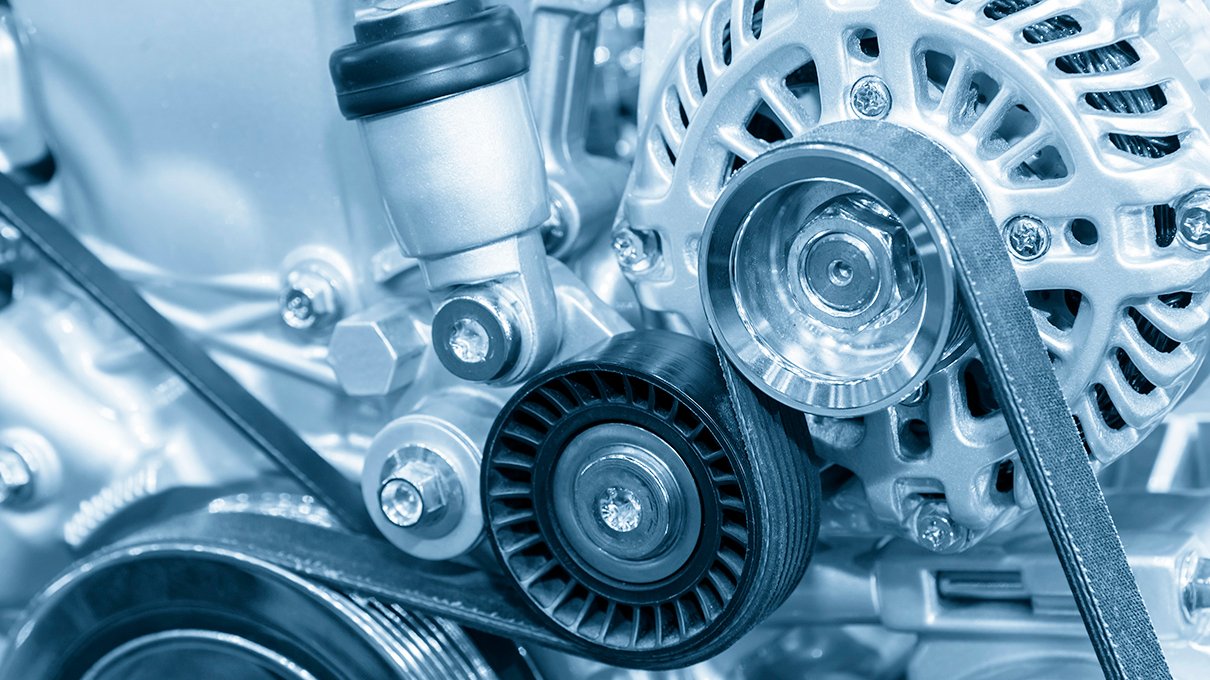Stay in control of your vehicle and keep running reliably with routine maintenance and repairs. One issue that could be holding your vehicle back is a bad alternator. Explore the signs of a bad alternator to see if it’s time to replace this essential electrical automotive component today.
Contents
What Does an Alternator Do?
Your car’s alternator recharges the battery and powers the electrical devices while you drive. It’s designed to convert mechanical energy from a running motor into electrical energy for these purposes. A fully functioning alternator requires little maintenance and can safely power your components for years.
Inside an alternator are a stator and a rotor. Both work as magnets and rotate thanks to mechanical energy from your car’s engine. This creates alternating current electricity, which is converted to direct current electricity to recharge your vehicle’s battery and power electrical components.
What Does a Bad Alternator Mean?
While built to last at least 80,000 miles, some alternators experience issues before this milestone. It’s important to inspect your alternator and listen for signs of damage as you drive.
When an alternator starts to fail it exhibits a few warning signs. Review these warning signs and replace or repair a damaged alternator promptly to avoid more serious issues:
- Grinding, squealing or whining noises
- Stuttering or stalling engine
- Inability to start your car
- Dead battery
- Dim lights
- Battery warning light turns on
Understanding these signs can help you reduce the risk of a bad alternator and keep your car driving safely. Treat any of these signs seriously and inspect your alternator. You may need to use a multimeter to verify any internal electrical issues.
How Does the Winter Affect Your Alternator?
Many alternator problems occur in the winter. One reason is the additional strain on your starter. Cold oil becomes thicker, requiring more effort from the starter to start your engine. This results in more time required to recharge your automotive battery.
Another way that winter affects your alternator is that cold weather can make the belts more brittle. A cracked belt can prevent your alternator from turning mechanical energy into electrical energy. This may not damage the component, but it does prevent it from working properly.
Winter can also be the worst time to experience an alternator failure. A dead alternator results in an inability to turn on your vehicle. Experiencing a breakdown in the winter can be a serious emergency even if you have the necessary warm clothing and emergency items in your vehicle.
Where To Find Alternators?
While all alternators perform the same basic task, they come in various sizes and specifications. Be sure you choose an alternator that has the correct mounts and specifications to fit your vehicle. Don’t attempt to install your own component without reviewing professional installation instructions and gathering the necessary tools.
From a cracked belt to a bad alternator, find the car parts you need to restore your vehicle this winter. Explore brand options and price ranges to find the best investment to maintain your vehicle.

